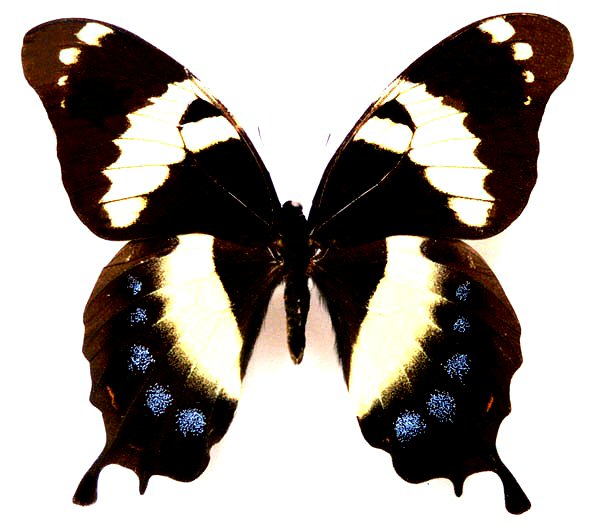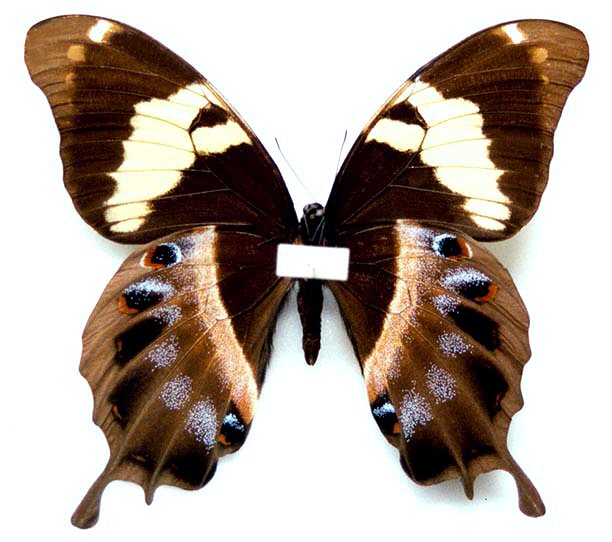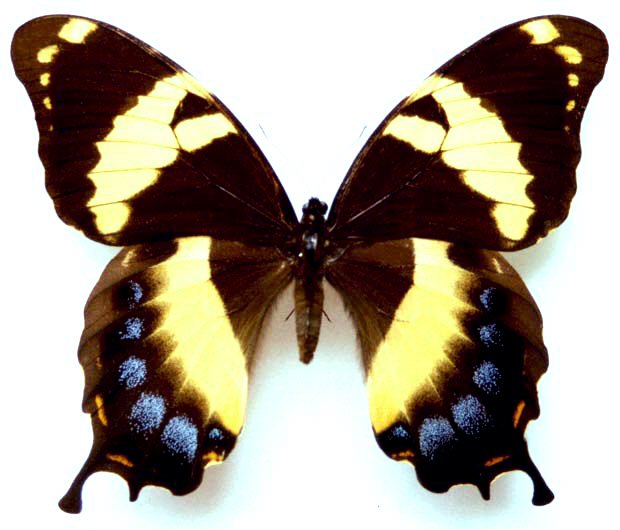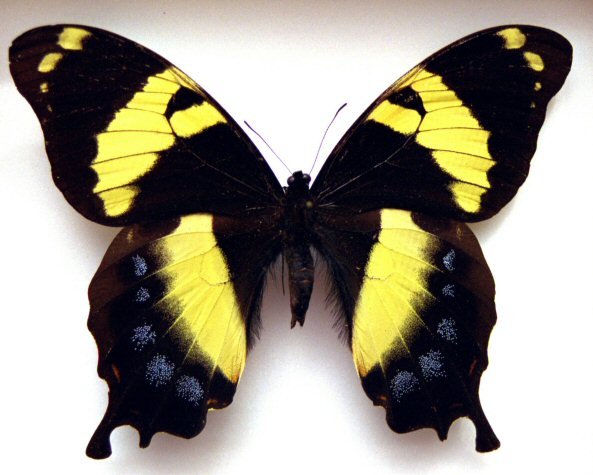



 |
 |
| Corn Pus Gap, Jamaica; July 1936 male; Avinoff legacy | Corn Pus Gap, Jamaica; July 1936; Avinoff legacy verso |
 |
 |
| Corn Pus Gap, Jamaica; July 1936 female; Avinoff legacy | Corn Pus Gap, Jamaica; July 1936; Avinoff legacy |
| freshly emerged female ( taken from cover of "Swallowtail Butterflies,
An Action Plan for their Conservation"
published by the IUCN). Dated August 1986 from the John Crow Mountains, Jamaica. |
Endemic to Jamaica, Papilio homerus is the largest butterfly in the Western hemisphere and is much prized by collectors. Unfortunately its habitat (The Blue Mountains in E Jamaica and some forests in the west of the island) is under significant pressures from commercial agriculture, and unless protected this beauty may be headed for extinction. Adults soar high above the ground cruising valleys in the mountain forests. The above illustrated specimen is quite old - it does not do justice to the beauty of this species in nature, as can be seen below.... Efforts to breed it commercially should be undertaken (and may in fact be underway) as a source for funding to protect its shrinking range and ensure its continued presence on the island. More people want to drink Jamaican Blue Mountain coffee however, and the fate of this magnificent insect may hang in the balance as the Mountain forests are converted to plantations.